Abstract
The influences of glucose, sorbitol, and NaCl in a basal enumeration medium at water activities (aw) from 0.82 to 0.97 on colony formation by sublethally heat-stressed Wallemia sebi conidia were determined. Over this aw range, glucose and sorbitol had similar effects on recovery, whereas at an aw of 0.82 to 0.92, NaCl had a detrimental effect. Colony diameters were generally largest on media containing sorbitol and smallest on media containing NaCl. Maximum colony size and viable population of heat-stressed conidia were observed on media at an aw of ca. 0.92. When the recovery incubation temperature was 20 degrees C, the number of uninjured conidia detected at an aw of 0.82 was reduced compared with the number detected at 25 degrees C, while at 30 degrees C, the number recovered at an aw of 0.97 was reduced. The effect on heat-stressed conidia was magnified. This suggests that W. sebi conidia may be more tolerant of aw values higher than the optimum 0.92 when the incubation temperature is decreased from the near optimum of 25 degrees C and less tolerant of aw values greater than 0.92 when the incubation temperature is higher than 25 degrees C. The sensitivity of heat-stressed conidia increased as the pH of the recovery medium was decreased from 6.55 to 3.71. W. sebi conidia dispersed in wheat flour at aw values of 0.43 and 0.71 and stored for up to 65 days at both 1 and 25 degrees C neither lost viability nor underwent sublethal desiccation or temperature injury.(ABSTRACT TRUNCATED AT 250 WORDS)
Full text
PDF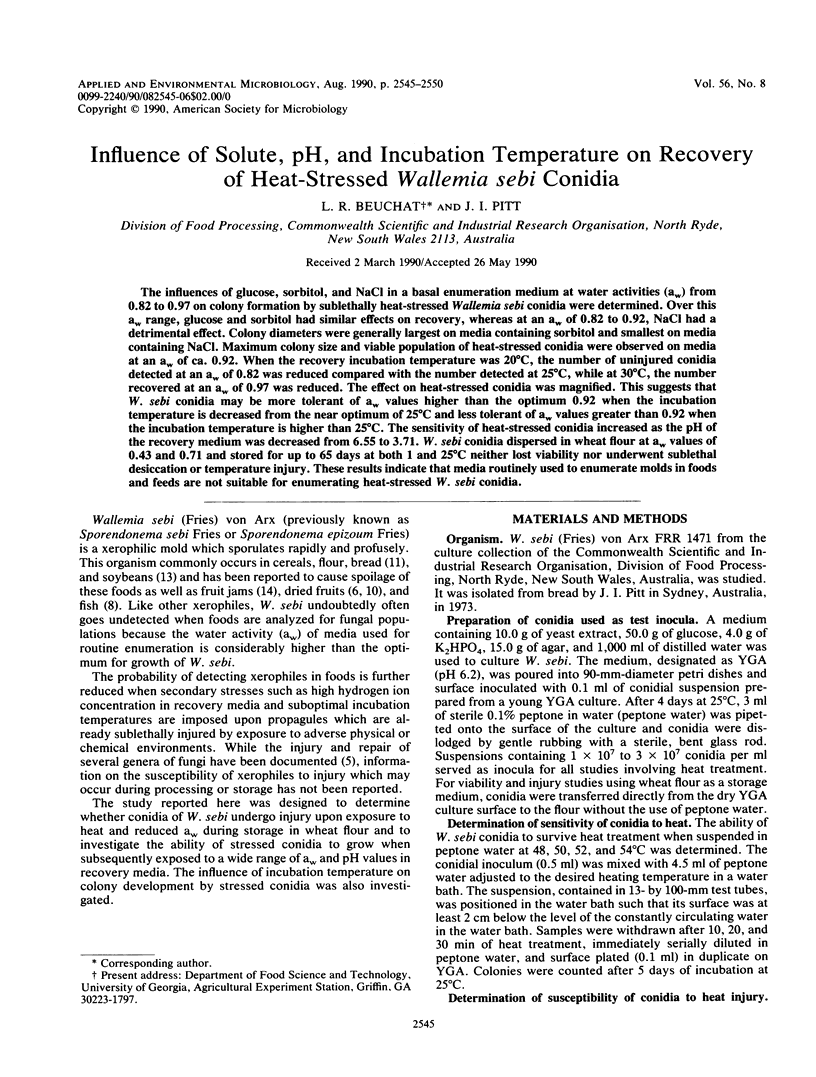
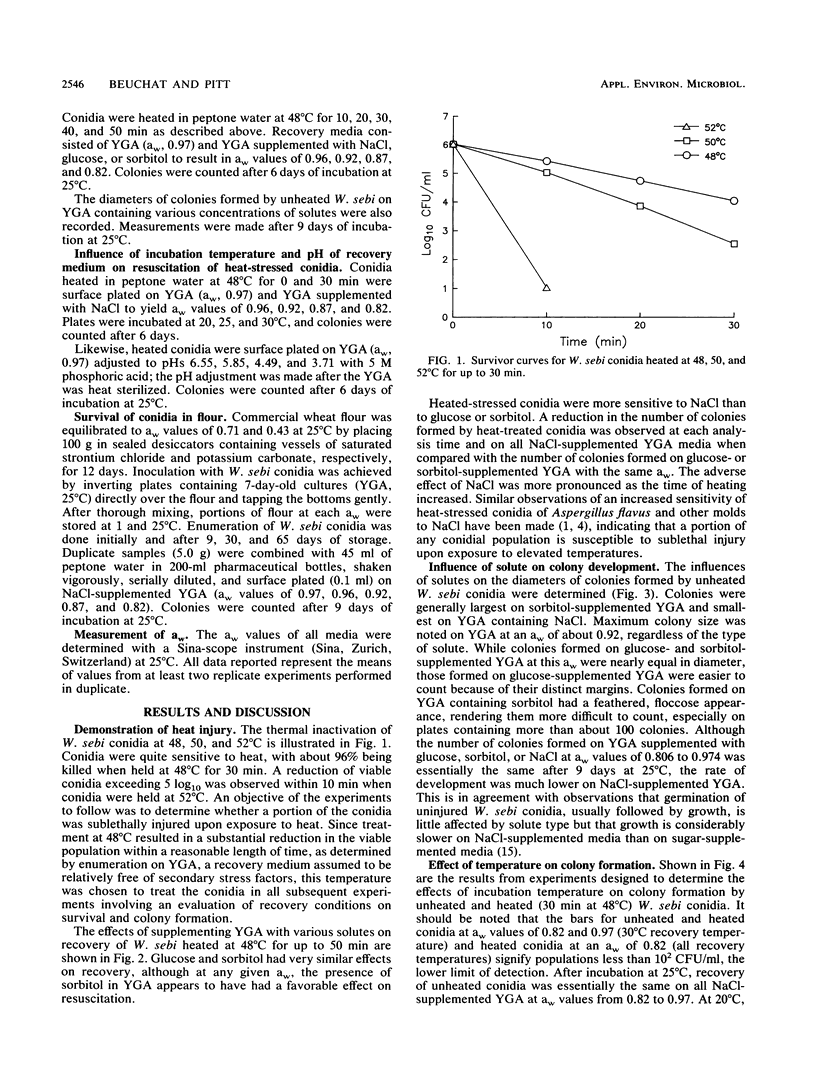
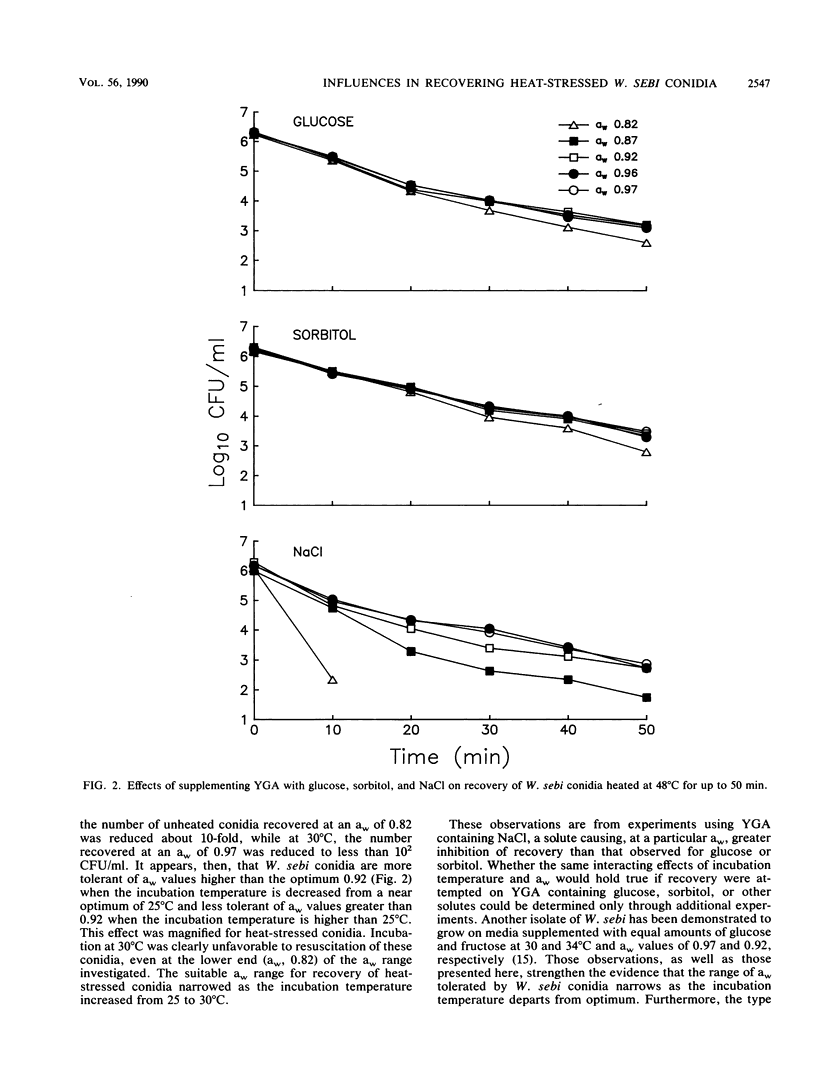
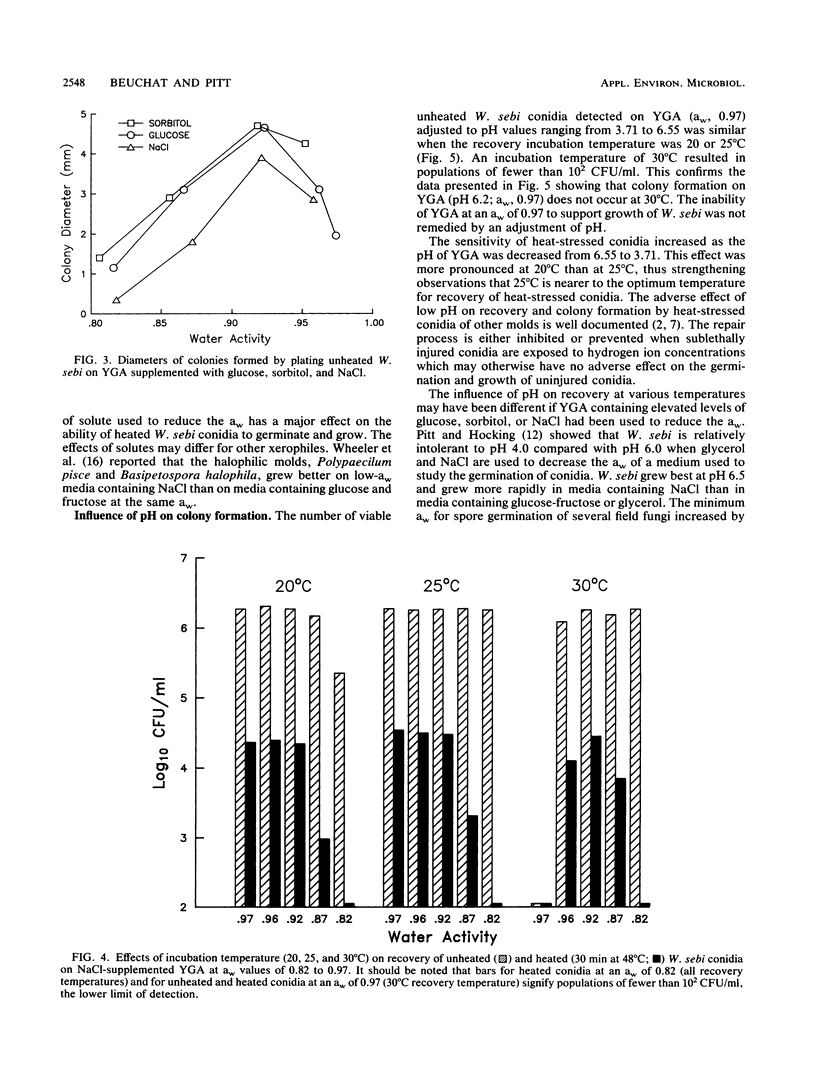
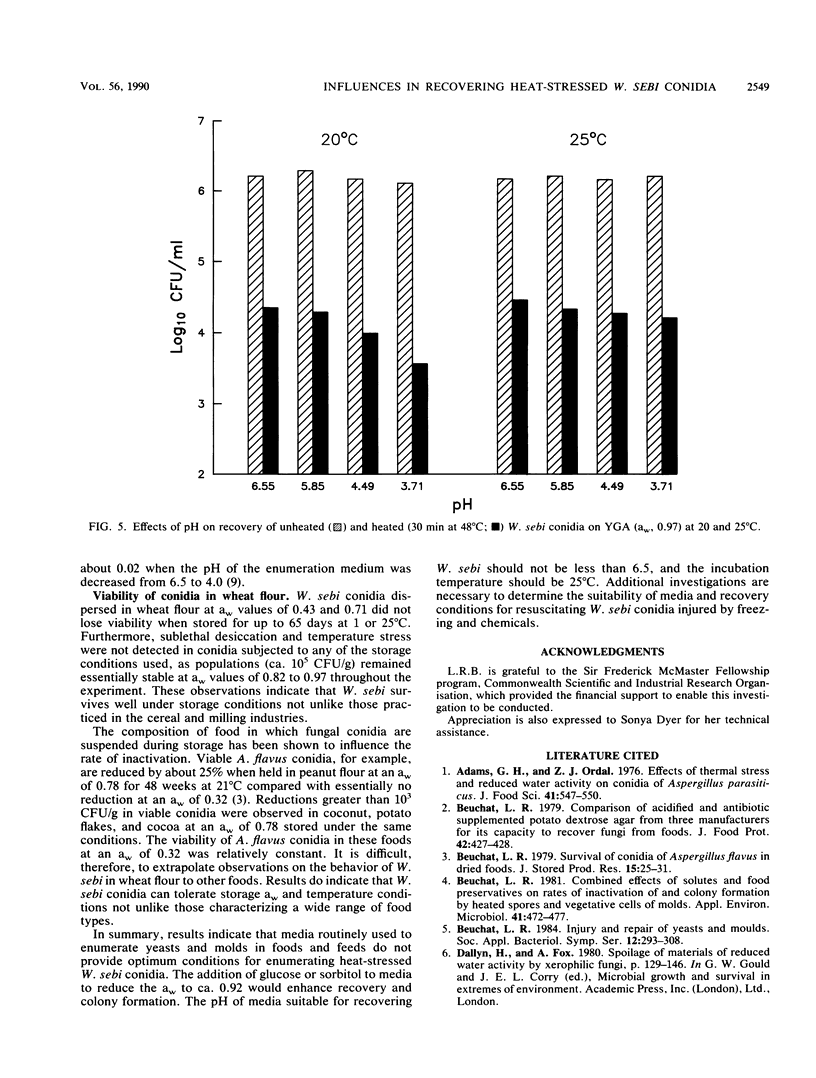
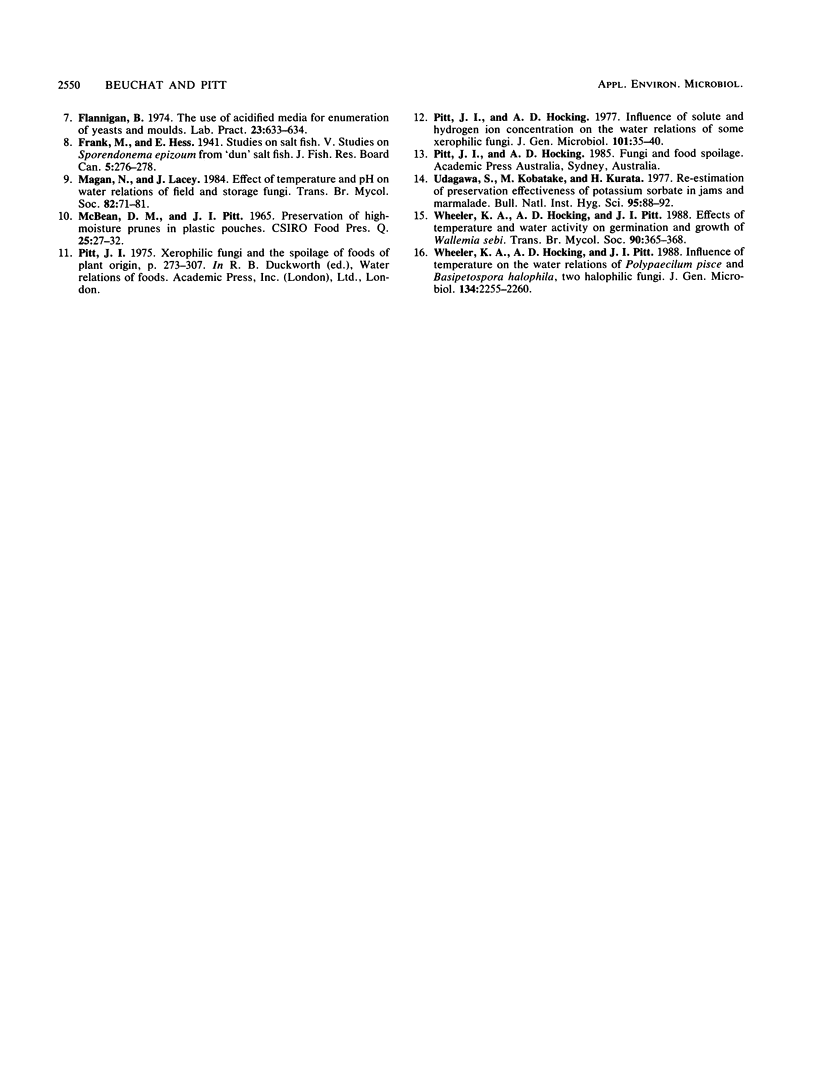
Selected References
These references are in PubMed. This may not be the complete list of references from this article.
- Beuchat L. R. Combined effects of solutes and food preservatives on rates of inactivation of and colony formation by heated spores and vegetative cells of molds. Appl Environ Microbiol. 1981 Feb;41(2):472–477. doi: 10.1128/aem.41.2.472-477.1981. [DOI] [PMC free article] [PubMed] [Google Scholar]
- Beuchat L. R. Injury and repair of yeasts and moulds. Soc Appl Bacteriol Symp Ser. 1984;(12):293–308. [PubMed] [Google Scholar]
- Pitt J. I., Hocking A. D. Influence of solute and hydrogen ion concentration on the water relations of some xerophilic fungi. J Gen Microbiol. 1977 Jul;101(1):35–40. doi: 10.1099/00221287-101-1-35. [DOI] [PubMed] [Google Scholar]
- Udagawa S. I., Kobatake M., Kurata H. [Re--estimation of preservation effectiveness of potassium sorbate (food additive) in jams and marmalade (author's transl)]. Eisei Shikenjo Hokoku. 1977;(95):88–92. [PubMed] [Google Scholar]


